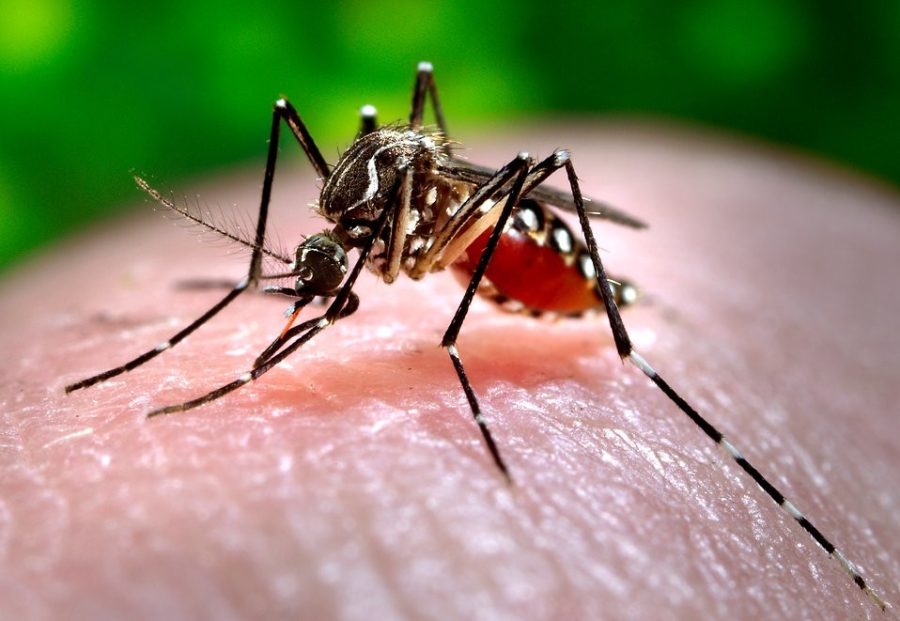Predicting where a disease-bearing mosquito bites next became a reality in an University of Arizona course, the Applied Concepts In Cyberinfrastructure class.
In the students analyzed data of mosquito populations that carry the Zika virus and Dengue Fever to see where they are most commonly found.
Since January 1, 2015, the Centers for Disease Control and Prevention have recorded over 5,500 cases of Zika virus in the United States and 37,000 in U.S. territories.
According to World Health Organization estimates, between 50 and100 million Dengue Fever infections occur yearly, though the vast majority of cases reported in the U.S. are contracted outside the country. The last outbreak in the U.S. was in Texas, 2005.
Symptoms for Zika virus and Dengue fever include high fever, joint pain, muscle pain and red eyes or bleeding, according to the CDC.
In the Applied Concepts In Cyberinfrastructure class, or ACIC, students learned about taking meaning from large amounts of data. Students looked at what researchers found and condensed the numbers to find a solution.
They used computational thinking based on taking a question and thinking of it in different layers, which they learned to do in the class, said Nirav Merchant, director of biocomputing at Arizona Research Laboratories and co-instructor of ACIC.
RELATED: A genetically modified conversation
“There are different parts of the puzzle, this is all about the researcher’s focus and looking for students to help perceive the problem in different layers, to find a solution by understanding the problem in different ways,” Merchant said.
The ACIC shared their data to their clients — other researchers on the UA campus that are involved in the college of public health, biocomputing and the college of agriculture and life sciences. Those clients could then use the data to better inform the public about how not to attract larger amounts of mosquitoes, according to Merchant. Those precautions lower the risk of the diseases spreading.
The ACIC and their clients use CyVerse, which is a system that allows students and researchers to communicate. It’s a cloud computing system that connects with bioinformatics, Merchant said.
The class analyzed California, Arizona and Nevada to learn how to calculate abundance of mosquitos in a given area by climate, humidity and population. Merchant said one of the goals of the class was to create an online portal that would allow citizens to look for their own zip code, to see what mosquitoes carrying diseases were around them, so they could protect themselves better.
However, the portal is not yet up and running, Merchant said.
“Unfortunately, we all have lofty goals, but the portal will be available in the near future,” Merchant said.
RELATED: Water purification truck works to show safety of purified waste water
According to data published in Nature Communications, mosquito populations have increased as much as ten times over the past five decades in New York, New Jersey and California. The number of mosquito species in these areas also increased two to four times in the same amount of time. This expansion makes tracking disease-carrying mosquitos a public heath cause.
Merchant said that before the computational thinking of CyVerse, there were very big-scale data problems that were not solved completely. Problems were solved in bits and pieces, but the solutions were missing other bits, like what a plant scientist required.
Now, with the help of CyVerse, Merchant said researchers can handle big volumes of data without requiring a human to understand the platform.
“We are truly open,” Merchant said. “Anyone can open a account and start working.”
CyVerse, which started as iPlant, began from funding from the National Science Foundation as a mission of solving problems that were hampered by not realizing the full potential of data acquisition.
“If you have a problem that needs to be solved, our job is to help you connect with resources and utilize them,” Merchant said.
iPlant was an effort to make cyber infrastructure more productive for end-users, Merchant said. As time went on, iPlant was rebranded into CyVerse to become more open to other types of scientists.
“There’s a lot of interesting work the NSF funds, like DARPA [Defense Advanced Research Projects Agency] that take a long time to become accessible to a scientist,” Merchant said.
Merchant said the importance of their work is in the immediacy.
“When they develop something new, we can bring it to our users right away,” Merchant said. “The underlying infrastructure is ready for their innovation, and users have the capability and data to harness that.”
Follow The Daily Wildcat on Twitter









